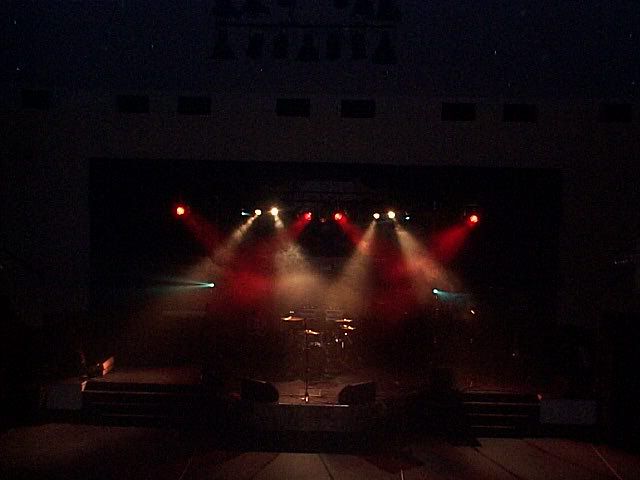Back rig: 26' of truss on 2 WORK LW-135 lifts
16 64's (back wash)
4 46's (fake acl effect)
2 Mighty Scans (on truss)
2 Mighty Scans (on top of road cases)
Front:
8 56's for front light stage left and right. Mounted on a pair of Crank 1's.
1 Magnum Pro 2000 fogger.
1 Altman Comet Follow Spot
All controlled by AMDJ dimming and a Scene Setter 48. It was a great show, 3 bands, two rap groups, 2 DJ's.
I know everyone here is really into doing shows with intelligent lights but nothing beats a par show, best bang for the buck and looks really good.
I am just happy that I have a light show that I can make money doing something that I like. Its not the coolest show in the world by far but the clients like it and they call me back. I think I found a niche here, there seems to be a need for a high quality small/medium scale lighting company here in Jacksonville.
Here are some pics, they do the show no justice.



Goals with this system
Short term:
>Getting rid of the dimmer packs and buying 24 channels of 1,200 watts of rack dimming.
>Socapex for everything, make setup and strike much faster.
Long term:
>Purchase some nice scanners, something with a 250 watt discharge lamp, rotating gobos, etc. (unless I can find a good deal on some old intellabeams or trackspots).
>Nice lighting desk (ETC express, Light Jockey, or something)
>Genie lifts
>Nice black backdrop
Business Goal:
>To provide highest quality light show possible with this system.
>To make things as professional as possible (having nice cables, roadcases, nice equipment that you don't have to take apart at every gig)
>Make a profit while doing something I like.
>Keep everything looking nice. (the client doesn't like to see the lights they are paying for being held together by gaff tape.)
Target groups:
>Concert promoters
>Corporate Theatre
>Party Planners
>Churches
>Theatre groups
>Regional tour groups
Thats the theory. I want to make it happen. I want to be a system owner, not a system user.
Its good to make goals. 2 years ago I made the goal to get rid of my coffee can lighting rig and replace it with "real" lights. Here I am ranting about it.
Have a good day

